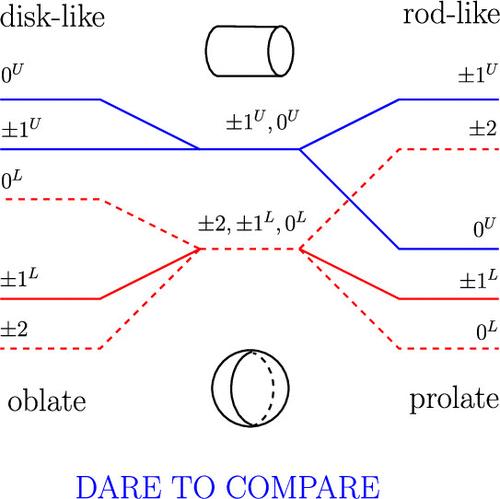当前位置:
X-MOL 学术
›
J. Phys. Chem. Lett.
›
论文详情
Our official English website, www.x-mol.net, welcomes your
feedback! (Note: you will need to create a separate account there.)
Exciton Fine Structure in Axially Symmetric Quantum Dots and Rods of III–V and II–VI Semiconductors
The Journal of Physical Chemistry Letters ( IF 4.8 ) Pub Date : 2024-11-18 , DOI: 10.1021/acs.jpclett.4c02800 Serguei V. Goupalov
The Journal of Physical Chemistry Letters ( IF 4.8 ) Pub Date : 2024-11-18 , DOI: 10.1021/acs.jpclett.4c02800 Serguei V. Goupalov

|
Both absorption and emission of light in semiconductor quantum dots occur through excitation or recombination of confined electron–hole pairs, or excitons, with tunable size-dependent resonant frequencies that are ideal for applications in various fields. Some of these applications require control over quantum dot shape uniformity, while for others, control over energy splittings among exciton states emitting light in different polarizations and/or between bright and dark exciton states is of key importance. These splittings, known as exciton fine structure, are very sensitive to the nanocrystal shape. Theoretically, nanocrystals of spheroidal shape are often considered, and their nonsphericity is treated perturbatively as stemming from a linear uniaxial deformation of a sphere. Here, we compare this treatment with a nonperturbative model of a cylindrical box, free of any restrictions on the cylinder’s aspect ratio. This comparison allows one to understand the limits of validity of the traditional perturbative model and offers insights into the relative importance of various mechanisms controlling the exciton fine structure. These insights are relevant to both colloidal nanocrystals and epitaxial quantum dots of III–V and II–VI semiconductors.
中文翻译:

III-V 和 II-VI 半导体轴向对称量子点和棒中的激子精细结构
半导体量子点中光的吸收和发射都是通过受限电子-空穴对或激子的激发或复合发生的,具有可调的尺寸相关谐振频率,非常适合各种领域的应用。其中一些应用需要控制量子点形状的均匀性,而对于其他应用,控制以不同偏振发射光的激子态之间的能量分裂和/或亮暗激子态之间的能量分裂至关重要。这些分裂物被称为激子精细结构,对纳米晶体形状非常敏感。从理论上讲,通常考虑球状的纳米晶体,并且它们的非球形性被扰动地视为源于球体的线性单轴变形。在这里,我们将这种处理与圆柱形长方体的非扰动模型进行了比较,该模型对圆柱体的纵横比没有任何限制。这种比较使人们能够理解传统微扰模型的有效性极限,并深入了解控制激子精细结构的各种机制的相对重要性。这些见解与 III-V 和 II-VI 半导体的胶体纳米晶体和外延量子点都相关。
更新日期:2024-11-18
中文翻译:

III-V 和 II-VI 半导体轴向对称量子点和棒中的激子精细结构
半导体量子点中光的吸收和发射都是通过受限电子-空穴对或激子的激发或复合发生的,具有可调的尺寸相关谐振频率,非常适合各种领域的应用。其中一些应用需要控制量子点形状的均匀性,而对于其他应用,控制以不同偏振发射光的激子态之间的能量分裂和/或亮暗激子态之间的能量分裂至关重要。这些分裂物被称为激子精细结构,对纳米晶体形状非常敏感。从理论上讲,通常考虑球状的纳米晶体,并且它们的非球形性被扰动地视为源于球体的线性单轴变形。在这里,我们将这种处理与圆柱形长方体的非扰动模型进行了比较,该模型对圆柱体的纵横比没有任何限制。这种比较使人们能够理解传统微扰模型的有效性极限,并深入了解控制激子精细结构的各种机制的相对重要性。这些见解与 III-V 和 II-VI 半导体的胶体纳米晶体和外延量子点都相关。

































 京公网安备 11010802027423号
京公网安备 11010802027423号